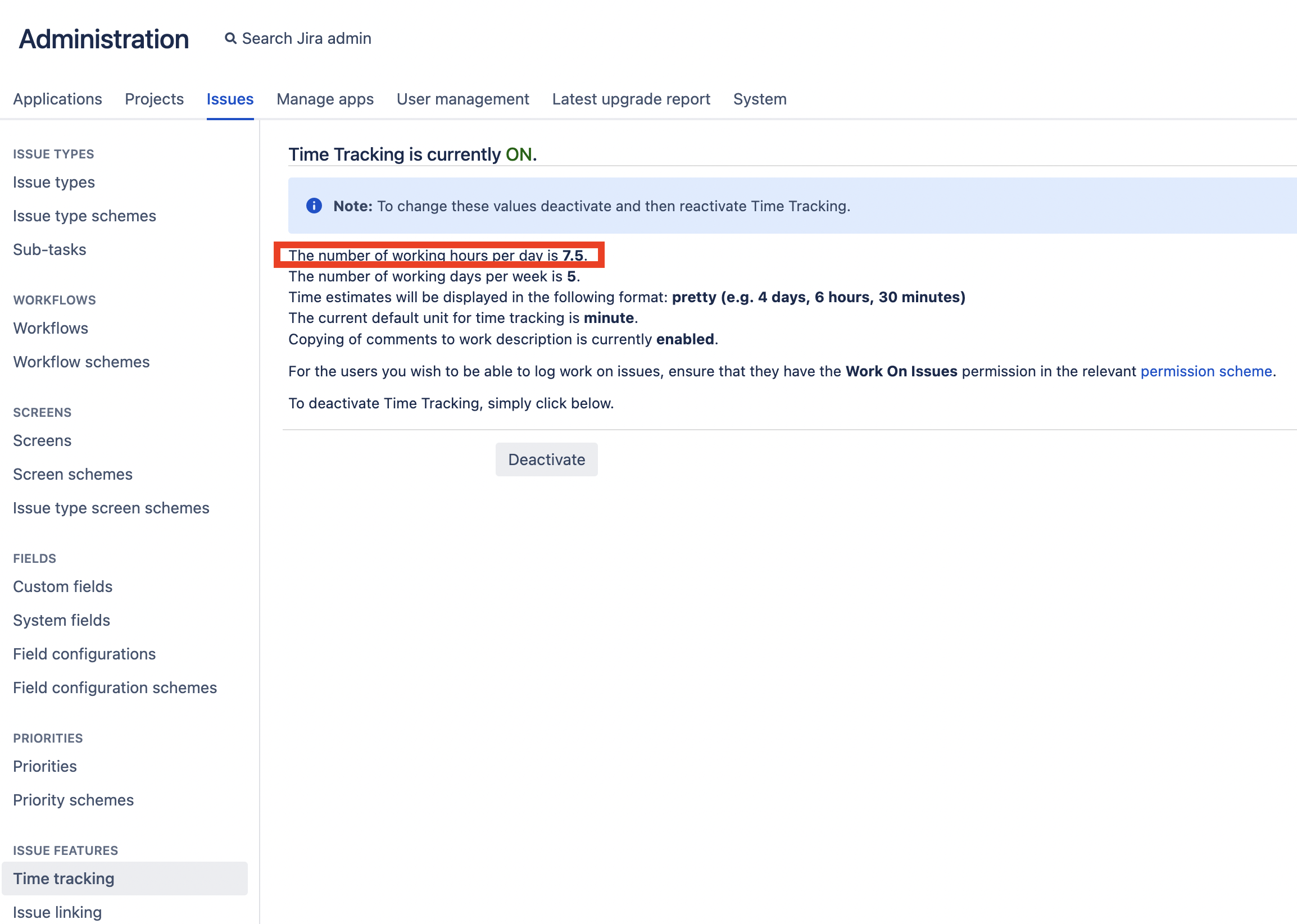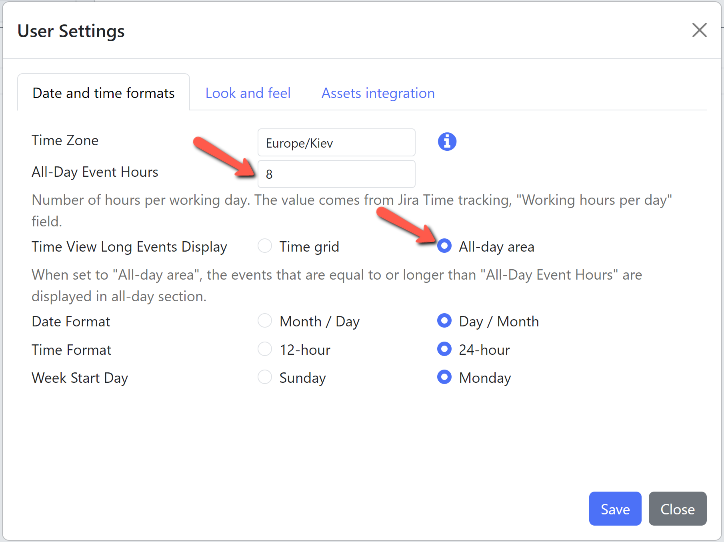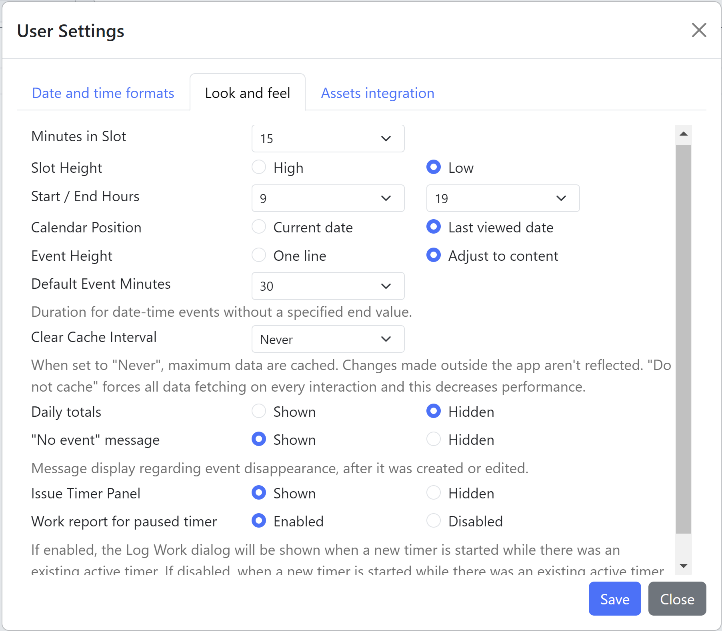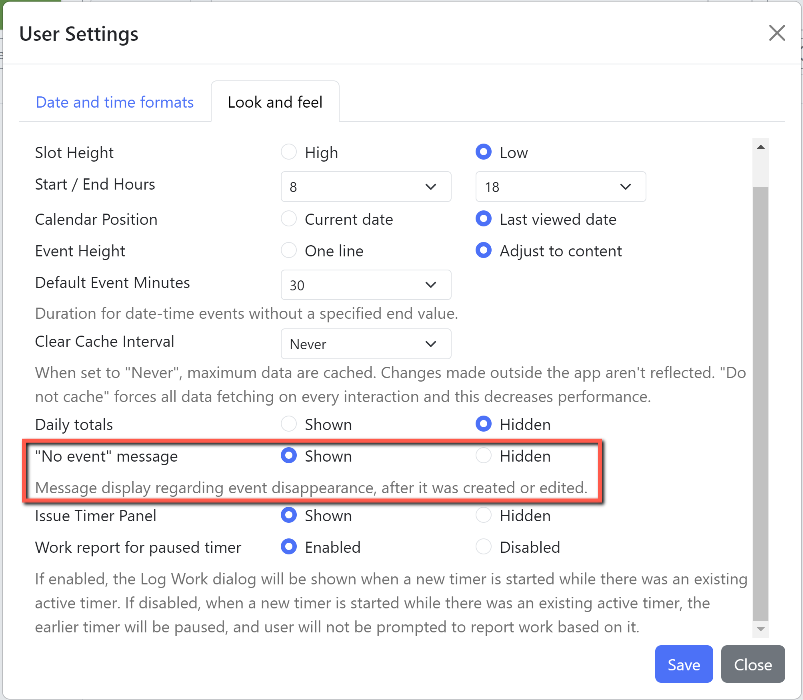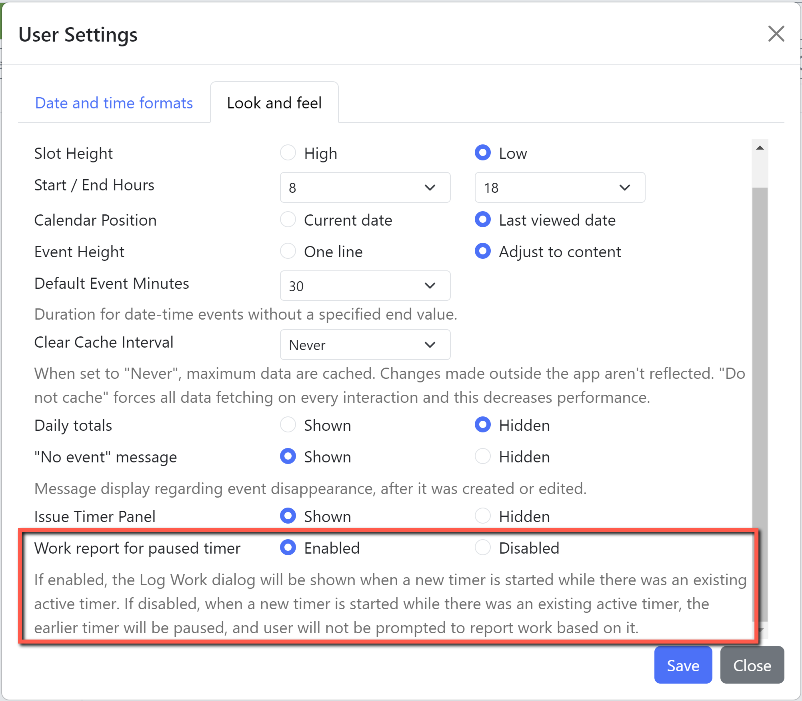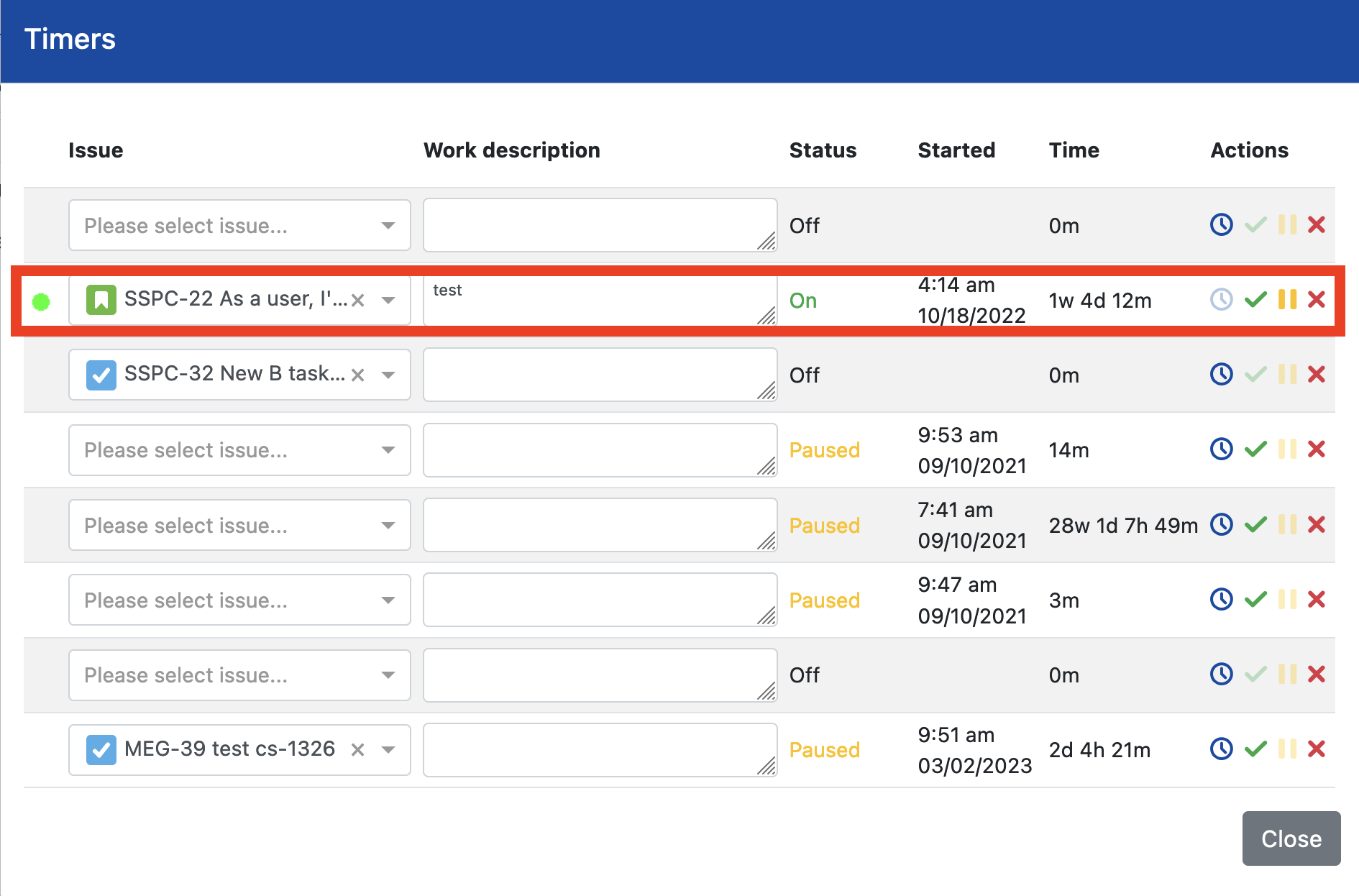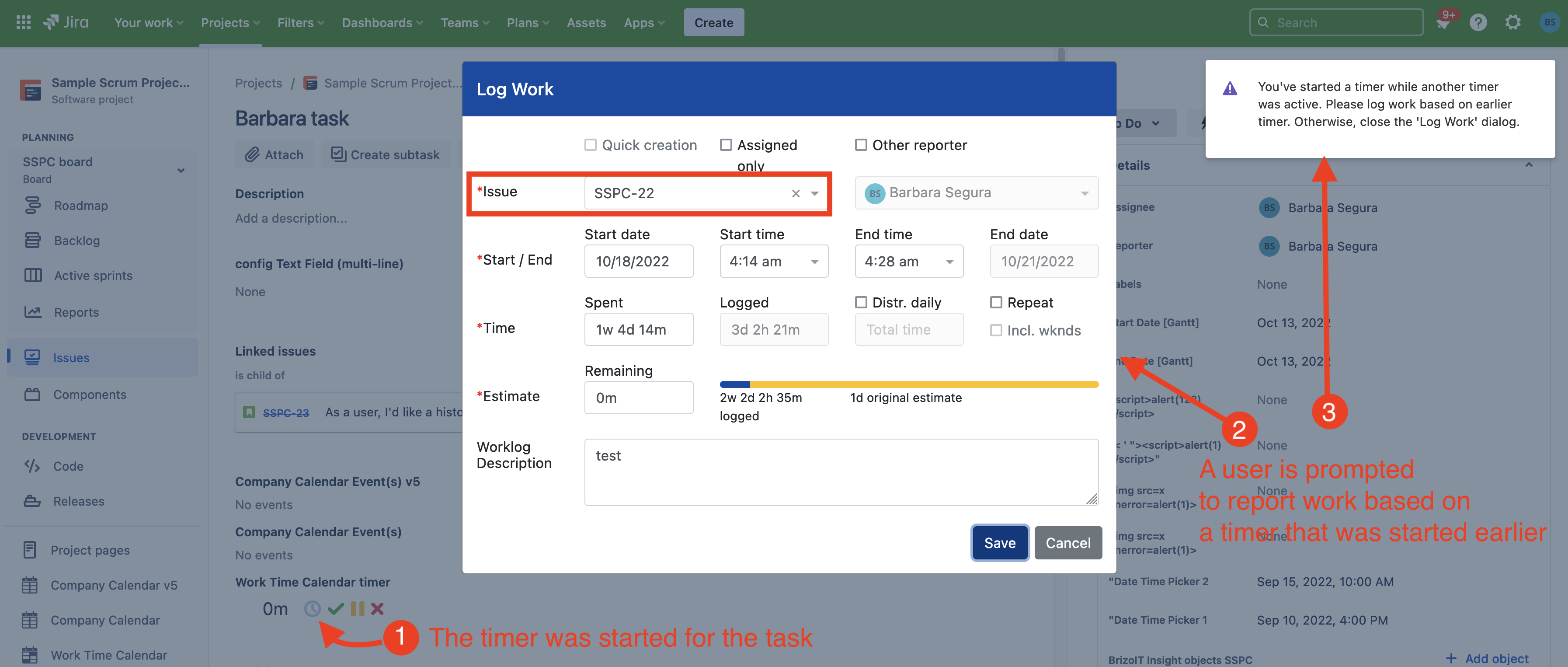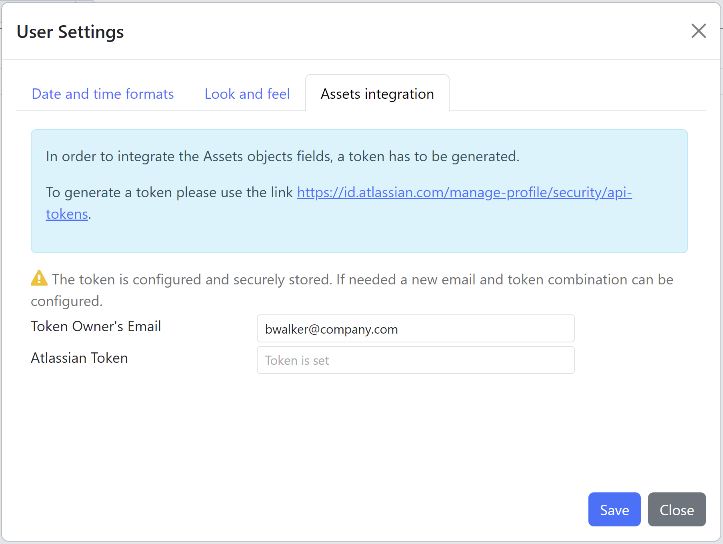To open the settings you need to click the User settings menu item.
...
Once you open the User Settings dialog for the first time, you’ll see the default settings that were configured by your Jira administrator.
| Info |
|---|
You can change the default settings, at any time, according to your preferences. |
The settings Long Events Display in Time View and Default Event Minutes require some further explanation to be understood and easily adjusted if needed.User Settings menu may consist of 2 to 3 tabs, depending on the current global app configuration. These tabs are
Date and time formats
Look and feel
Assets integration (in case it is enabled by admins)
Some of the settings require additional clarification. Please see below.
Date and time formats
All-Day Event Hours
The number of hours per working day. The value comes from Jira Time tracking, "Working hours per day" field.
If Long Events Display in Time View is set to All-day area then in time view mode events longer than All-Day Event Hours are displayed in the all-day section.
For instance, All-Day Event Hours is 8h and Long Events Display in Time View is set to All-day area. As result, the event that starts on at 10:00am and ends on at 6:00pm will be shown in All-Day area, in Time view.
...
...
In case you prefer the event above to be displayed in time grid instead of all-day area, you would have to change your User settings and set Long Events Display in Time View to Time grid.
Look and feel
Default Event Minutes settings define the duration for the event that has no initial times provided. For instance, you work in a monthly mode. You click on a calendar and create an event. The start time for the event will be based on your settings for Start Hours:
...
Feel free to experiment with your User settings to find the variations that suit your needs the best.
...
Daily totals display
| Tip |
|---|
The display of daily total hours (days) can be disabled under the Look and feel tab in the User settings. |
“No event” message
| Tip |
|---|
Starting app version 6.0.x, a new setting “No event“ message was added. The settings allows to manage the message display regarding an event disappearance, after the event was either created or edited. |
For instance, in your calendar, you have a worklog source configured to display the worklogs that belong to user Barbara. You, then, created a worklog event for user John. Since user John is not added to the worklog source configuration, you’ll see a relevant message regarding the absence of the event on a calendar.
Work report for paused timer
| Tip |
|---|
Starting the app version 6.0.4 (cloud) / 6.1 (server), a new user setting Work report for paused timer has been introduced to facilitate effortless work reporting. |
If the setting is enabled, the Log Work dialog will be shown when a new timer is started while there was an active timer still going on. If disabled, when a new timer is started while there was an active timer, the earlier timer will be paused, and user will not be prompted to report work based on it.
For instance, QA engineer Barbara had a timer set for the issue SSPC-22.
Then, Barbara was asked by her team lead to start working on another task. Once Barbara clicked Start timer for a new issue, the Log Work dialog is shown to her, along with the message, as she is prompted to report her work based on a timer that was started earlier.
Assets integration
In case your Jira admin has enabled the Assets integration where multiple user tokens have to be generated, you’ll see one more tab Assets Integration.
In order to see the configured Assets fields on calendar events, a user will have to generate a token using the provided link, enter the email address linked to their Jira profile and paste the generated token into the corresponding field under the Assets integration tab.
| Info |
|---|
In case the Assets integration is enabled with a single global token or not enabled at all, you won’t see the Assets Integration tab, in User Settings. |


